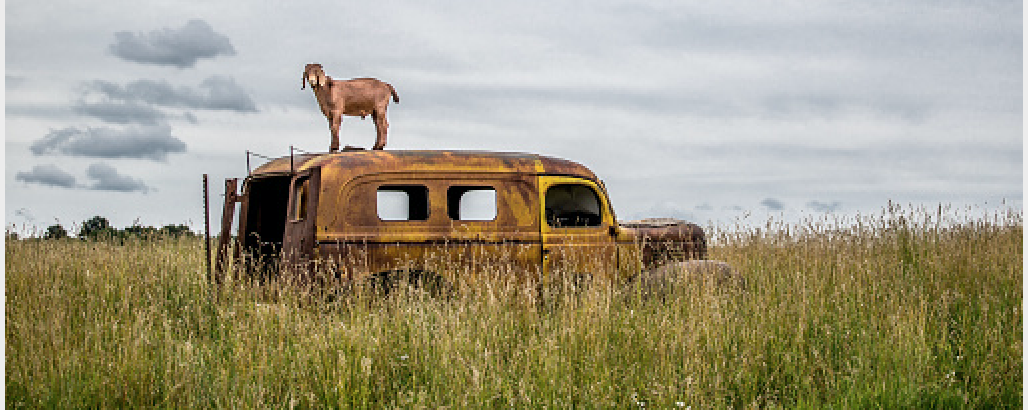
“I have wasted my life.” So goes the famous last life from James Wright’s “Lying In A Hammock on Duffy’s Farm.” But somewhere around now, I am inclined to agree with him. At Greenfield/Belser, I have spent a working lifetime creating brands only to watch them wash away like sand castles after I’ve left the brand beach. And the damned thing about it is, it’s all my fault. We could have stopped brand erosion if only…
If only we explained what a brand is in a clear, compelling way.
Almost no one who owns a brand understands what they’ve got. To listen to brand-owners talk about their brand, it’s as if they own a cardboard box of puzzle pieces but the lid with the complete picture has been lost. As a result, the puzzle cannot be assembled. They talk about the logo without really knowing what roles the logo plays. They talk about their website but could not explain the verbal or visual strategies present at the site’s launch. They own brand guidelines but can apply them with as much confidence as I can assemble Ikea furniture on the first try.
Over the past two or three years, we've found Marketing Directors driven by an unspoken demand to bring everything in-house in order to save precious dollars. We're all for it; in fact, we've always said our goal is to work ourselves out of a job…but there is one investment that should be sustained: brand quality! Even very well-defined, strong brands can drift. It might be 10 miles or 100 miles down the road before the brand finds itself in a ditch. It's understandable; usually, a tune-up with the brand design firm that helped create the brand can get you back on the road again. What's shocking to us, however, is how quickly brands are winding up not in a ditch but all the way out to the middle of in cornfield—sometimes almost immediately, a mile or two down the road. Why buy a beautiful, expensive car and not learn to drive it?
Before I go any further, let me insist that I'm not thinking of you. Seriously, I'm not. I don't even know who's reading this. I'm responding to a trend we see generally across the board that's led to brands that are actually less exciting today than they were 10 years ago. In fact, it led us to field a survey we called, "The Great Recession and Brand Regression." Or more recently, “The Great Pandemic and Brand Collapse.”
So, why the drift?
DIY Websites
No one doubts their website is their single most important marketing-facing tool. Over the past five years, every RFP requires websites be designed and built with maximum flexibility so you can maintain them entirely yourselves. That's a great thought in theory. But there's an underlying problem. A website is not a brand; it's an expression of the brand. The brand is, loosely, like Plato's Theory of Forms (Indulge me). The form (or brand) is the most fundamental sort of reality, an über-reality if you will. The website is the brand as expressed through words, images, tone, personality, etc. You simply cannot hand over your website to your in-house designer and automatically expect they will understand and sustain the brand.
Here's what happens. I'll be stunned if you disagree: Getty Images. You need to "illustrate" an event or an idea. Google Getty Images or your favorite stock house and select a mediocre, uninspired image. That's not what you intend, of course, but that's usually the result, isn't it? After all, time is short, your budget is tight (because you don't actually have an illustration budget) and it no longer even occurs to you or any of us to hire a photographer or illustrator to interpret that idea. The image goes up; the brand goes down.
Why? Because no thought was given to the brand. Thought was given only to the narrowly focused need for the image.
Heck, it's incredibly hard for us to find great images rooting around in Getty's shoebox. The automatic search on Getty may be the single greatest destroyer of brands today. In the hands of overworked, underfunded staff who may not really understand the brand in the first place, "good enough" is most often an image from the first page of search results. Brand quality? Excuse me, I'm busy.
I chose to discuss the website because the images chosen here make their way into brochures, newsletters, alerts, seminars and every other communication tool. Viruses do not replicate faster. Websites are the Covid-19 of diseased brands.
The Cure
Let's be practical. At the speed of business, much of this communications activity has to operate on autopilot. But to protect your brand, pry apart "brand" and "website" and hold them at arm's length. Your most important images and messages (we haven't even talked about messaging!) should be managed at a higher level. The images on your home page or on your key service lines are the face of your firm. Don't let those tumble down the side of the road. Here's one place where you should have a line item in your annual budget for refreshing and sustaining the brand. Call the design firm or agency; spend the money. That's a real investment.
Your mission-critical initiatives should get the same level of attention and respect. That's an investment in their success. An article in the Harvard Business Review once argued that the singular job of a CEO is to protect the brand by:
- Understanding your brand equities
- Understanding your image strategy
- Understanding the grid
- Understanding design elements